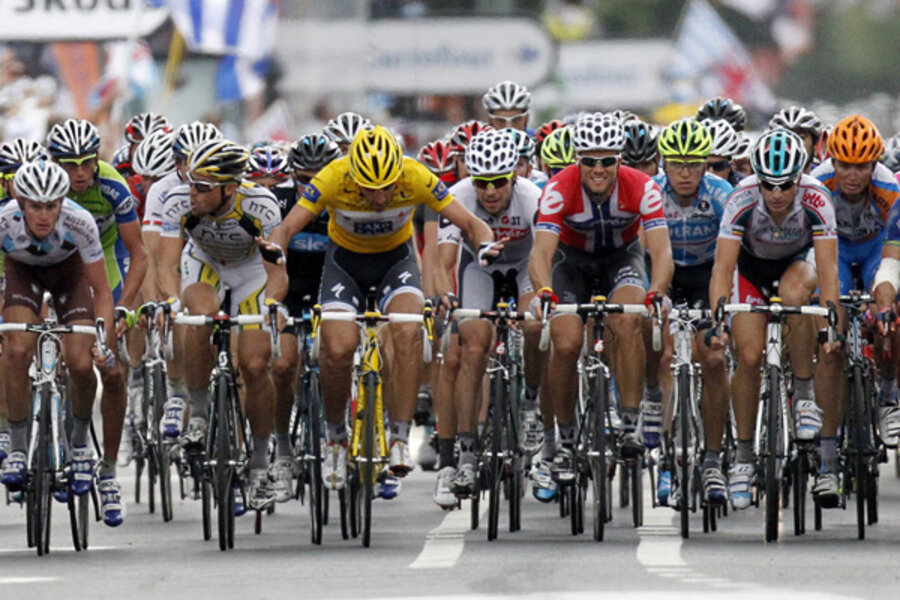Tour de France 101: What's the peloton?
Loading...
| Boston
'Peloton’ can refer to two things: either the whole pack of 219 riders from 22 teams participating in the Tour de France, or the V-shaped main pack of riders drafting off one another. Peloton literally means little ball or platoon. During the Tour, it a thing of beauty and danger.
The front rider in the peloton takes the brunt of the wind and air, cutting wind drag for rear riders by up to 40 percent.
The peloton changes shape with the winds. A headwind narrows the peloton, so fewer riders must battle the wind. A backwind widens the peloton, so more riders take advantage of the push. A side wind turns the peloton into a echelon formation (think fighter plans) so that only the side-most rider battles the wind.
One team normally controls the front of the peloton, rotating its lesser riders to the front of the pack to create a draft for their stars (such as Lance Armstrong). A team might try to quicken or slow the peloton depending on strategy.
Hundreds of cyclists could be riding in the peloton at any given time, with only moments to react to changes in pace, wind, or crashes.
Michael Barry, a cyclist and author of “Inside the Postal Bus: My Ride With Lance Armstrong and the U.S. Postal Cycling Team,” describes life in the peloton in a column for The New York Times:
The peloton flows with the roads, and we, the cyclists, blindly hope that the flow is not broken. A wall of wheels and bodies means we can never see too far in front, so we trust that the peloton flows around any obstacle in the road like fish in a current.
When in the group, we follow the wheels, looking a few yards ahead, watching other riders to gauge our braking, accelerations and how we maneuver our bikes. Over time, cycling in a peloton becomes instinctual, and our bicycles become extensions of our bodies. When that flow is broken, reaction time is limited and we often crash.
RELATED STORIES:





